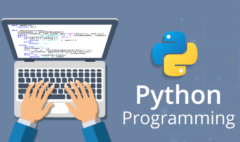Where Is Formal Education Lacking?
Where Is Formal Education Lacking?
This information is taken from World Economic forum
- Our current education system is built on the Industrial Revolution model and focuses on IQ, in particular memorization and standardization;
- We must update education with job readiness, the ability to compete against smart machines and the creation of long-term economic value in mind;
- Education access, equity and quality must be improved to solve the global education crisis – 72 million children of primary education age are not in school.
Education today is in crisis. Even before the coronavirus pandemic struck, in many parts of the world, children who should be in school aren’t; for those who are, their schools often lack the resources to provide adequate instruction. At a time when quality education is arguably more vital to one’s life chances than ever before, these children are missing out on the education needed to live fulfilling lives as adults and to participate in and contribute to the world economy.
Historically, education has been the shortest bridge between the haves and the have-nots, bringing progress and prosperity for both individuals and countries, but the current education system is showing its age. Founded at a time when industries needed workers with a relatively fixed set of skills and knowledge, it is losing its relevance in an era of innovation, disruption and constant change, where adaptability and learning agility are most needed.
Our current education system, built on the Industrial Revolution model, focuses on IQ, in particular memorization and standardization – skills that will be easily and efficiently supplanted by artificial and augmented intelligence (AI), where IQ alone isn’t sufficient. A good blend of IQ (intelligence) + EQ (emotional intelligence) + RQ (resilience) is critical to unleashing a student’s potential.
Evaluating our current education system against three criteria – job readiness, ability to compete against smart machines for jobs and creating long-term economic value – reveals the following:
- 34% of students believe their schools are not preparing them for success in the job market. We need to fix the bridge from education to employability;
- 60% of future jobs haven’t been developed yet and 40% of nursery-age children (kindergarteners) in schools today will need to be self-employed to have any form of income (Source: WEF Future of Jobs Report). We need to prepare students for jobs that haven’t been created yet and to become entrepreneurs. What we need to learn, how we learn, and the role of the teacher are all changing.









